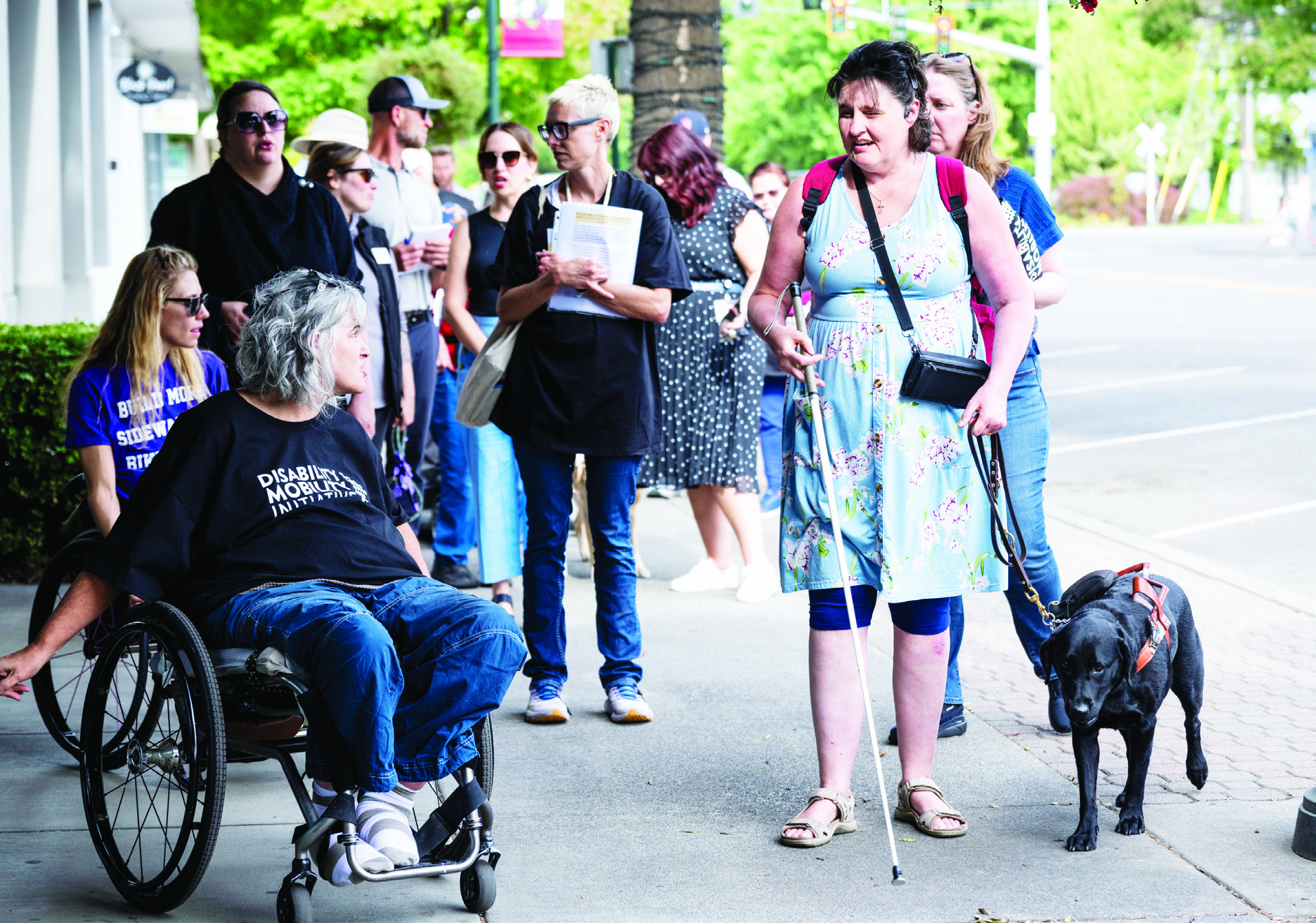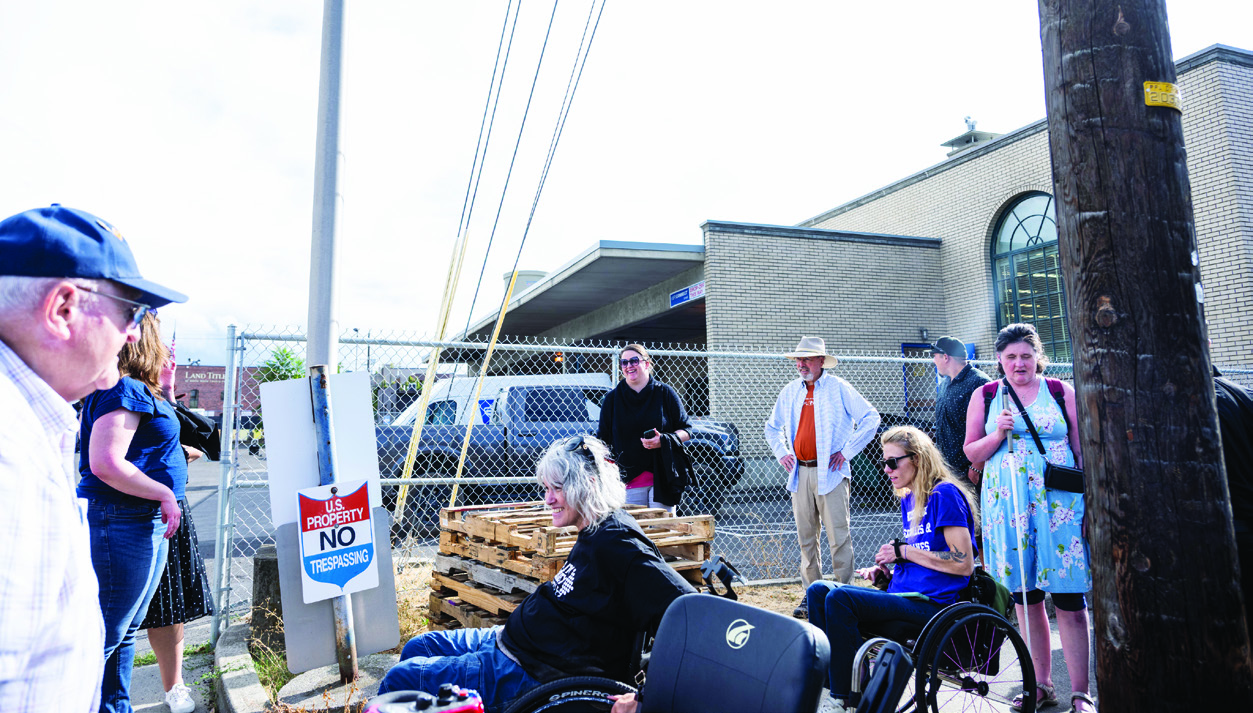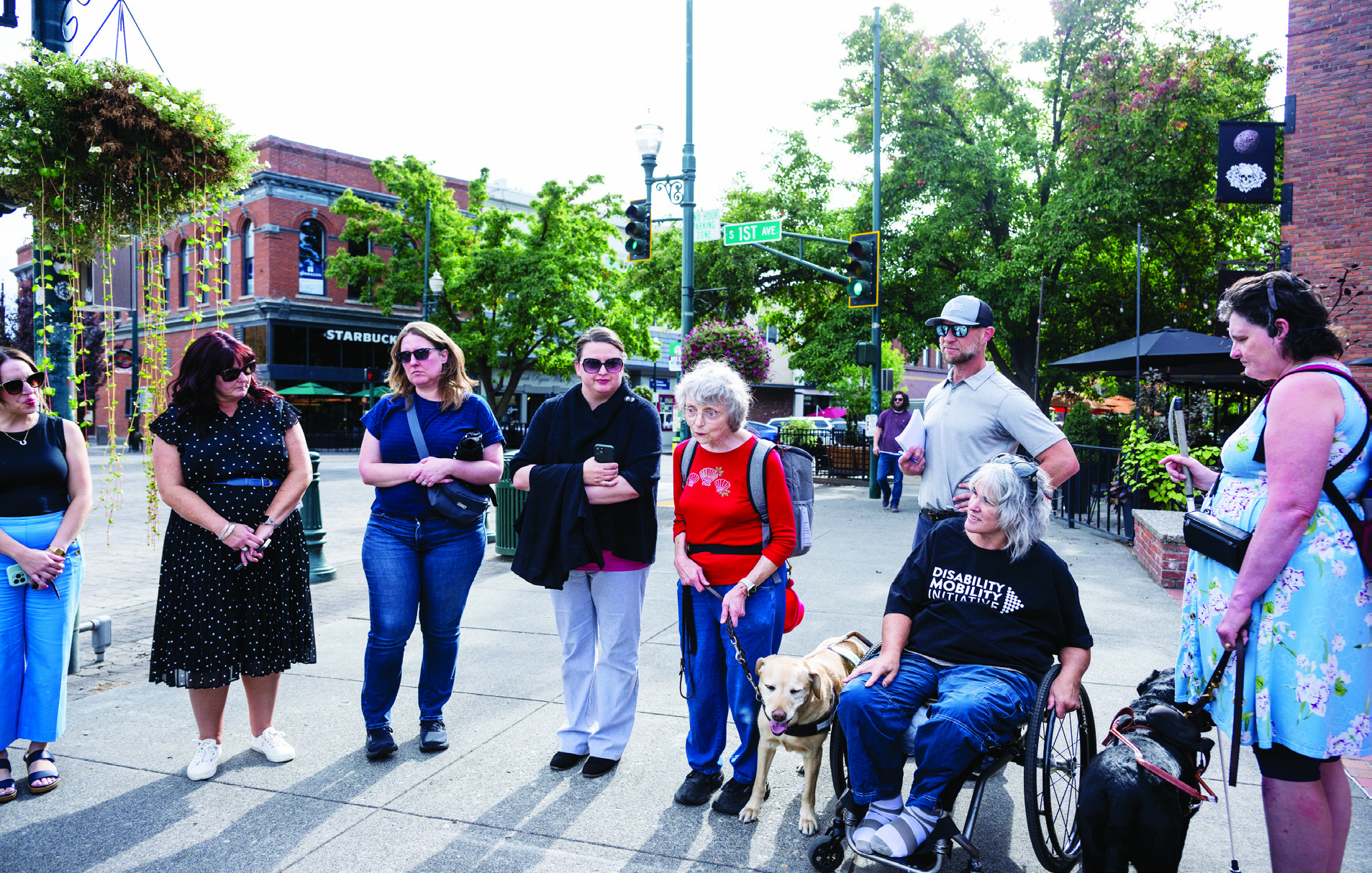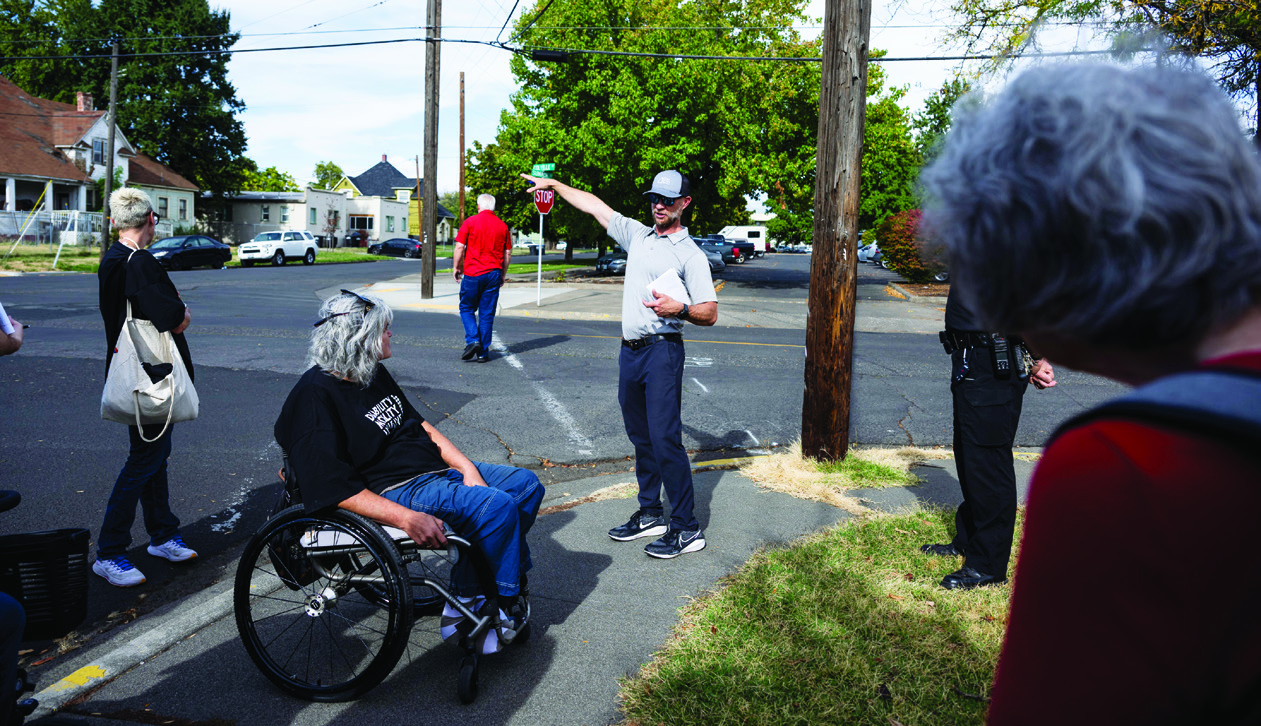Grading access: Measuring barriers in downtown WW

Photos by Kezia Setyawan, Walla Walla Union-Bulletin
Annee Hartzell of United Blind of Walla Walla shares how a cane-user would navigate through different accessibility cues downtown through interacting with obstacles and the different pavement surfaces.
Annee Hartzell of United Blind of Walla Walla shares how a cane-user would navigate through different accessibility cues downtown through interacting with obstacles and the different pavement surfaces.

Attendees look at the disability parking spot at the Walla Walla Post office. The disability parking spot is currently being hindered behind a metal fence, with the offloading section blocked by a dumpster and marked by a “US PROPERTY NO TRESPASSING” sign, often causing confusion for disabled drivers.

With her guide dog, Joleen Ferguson talks about the improvements that need to be made between 1st and Main streets. She recounted her experience that left her missing the bus in hot weather because of a lack of way-finding surface strips that did not give her the cues needed to identify the bus stop location.

Walla Walla Public Works Director Ki Bealey talks about the differences between curb features at the intersection of Colville and Sumach streets. Bealey said a project at that intersection to improve accessibility and align the curbs parallel to each other could cost between $200,000 and $300,000.
Local government officials, nonprofit representatives and community members joined together Tuesday afternoon, Sept.
30, for a walk throughout downtown to assess the accessibility features available and what could be improved with regards to sidewalks, curbs, parking, roadways and Walla Walla Valley Transit.
Anna Zivarts, founder of A Week Without Driving, said she was glad to see the initiative gain traction not only in Washington but across the country. For Walla Walla and Columbia Counties Accessible Communities Advisory Committee chair Connie Taylor- Randall, the walkabout was an opportunity to spotlight the specific needs people have.
“Everyone has a disability, and we know the most about our own,”
Taylor-Randall said.
Participants included representatives from the city of Walla Walla, city of College Place, College Place Police Department, Walla Walla Valley Transit, Downtown Walla Walla Foundation and Walla Walla County.
Walla Walla’s Week Without Driving co-organizer Vicki Ostrander said she hoped the walk would encourage people to collaborate more on accessibility issues.
“If we work together, we can accomplish a lot more,” she said.
— Kezia Setyawan
30, for a walk throughout downtown to assess the accessibility features available and what could be improved with regards to sidewalks, curbs, parking, roadways and Walla Walla Valley Transit.
Anna Zivarts, founder of A Week Without Driving, said she was glad to see the initiative gain traction not only in Washington but across the country. For Walla Walla and Columbia Counties Accessible Communities Advisory Committee chair Connie Taylor- Randall, the walkabout was an opportunity to spotlight the specific needs people have.
“Everyone has a disability, and we know the most about our own,”
Taylor-Randall said.
Participants included representatives from the city of Walla Walla, city of College Place, College Place Police Department, Walla Walla Valley Transit, Downtown Walla Walla Foundation and Walla Walla County.
Walla Walla’s Week Without Driving co-organizer Vicki Ostrander said she hoped the walk would encourage people to collaborate more on accessibility issues.
“If we work together, we can accomplish a lot more,” she said.
— Kezia Setyawan

